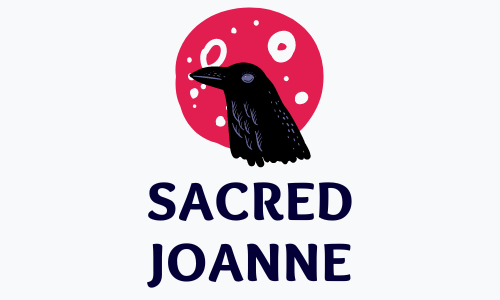Sun-Saturn Aspects In Synastry: Detailed Analysis

Astrology offers fascinating insights into how celestial bodies, like the sun and Saturn, influence our relationships. When we talk about Sun-Saturn aspects in synastry, we’re exploring the dynamic interplay between one person’s core identity (Sun) and another’s structure, discipline, and challenges (Saturn).
These aspects can profoundly shape the nature of a relationship, setting the tone for growth, tests, and mutual respect.
Whether it’s the warmth and vitality of the Sun clashing or harmonizing with Saturn’s cold, mature seriousness, each aspect reveals unique pathways to understanding and navigating the complexities of our connections.
This article delves into the intricacies of Sun-Saturn aspects, offering a detailed analysis that is both accessible and enlightening for astrology enthusiasts and novices alike.
Sun-Saturn Synastry Aspects In a Nutshell
| Aspect | Dynamics | Challenges | Growth Opportunities |
|---|---|---|---|
| Sun Conjunct Saturn | Stability, discipline, and mutual respect. | Risk of restriction and criticism. | Fosters maturity, reliability, and shared goals. |
| Sun Opposite Saturn | Tug-of-war between freedom and responsibility. | Misunderstandings and feeling constrained. | Encourages balance, understanding, and patience. |
| Sun Sextile Saturn | Supportive growth, stability, and practical achievements. | Minor; balancing structure with spontaneity. | Enhances mutual support and achievement of goals. |
| Sun Trine Saturn | Ease in combining discipline with creativity. | Few; potential for complacency in personal growth. | Promotes loyalty, commitment, and mutual growth. |
| Sun Square Saturn | Tension demanding resolution for growth. | Frustration from feeling limited or misunderstood. | Catalyzes personal development and resilience. |
| Sun Quincunx Saturn | Karmic connection requiring adjustment. | Misalignments and frustrations. | Leads to transformative growth and understanding. |
Sun Conjunct Saturn In Synastry

When the Sun and Saturn meet in a conjunct aspect in synastry, it’s like combining daylight with nightfall, each holding its own strength and challenge.
This aspect is a powerful and complex interaction that significantly influences the dynamics of a relationship.
Let’s break down what this means in simpler terms.
The Sun represents our core identity, our essence, and the light we shine onto the world. It’s about who we are at our core and how we express our individuality.
Saturn, on the other hand, stands for discipline, responsibility, and the lessons we learn through challenges and time. It’s the teacher of the zodiac, often associated with restrictions but also with the growth that comes from perseverance.
When these two celestial giants conjunct, or align closely in the sky from our perspective on Earth, their energies blend in the context of a relationship.
This can create a scenario where the Saturn person becomes a grounding force for the Sun person, potentially offering stability and structure to their partner’s life.
However, it’s not always an easy ride.
The Saturn person might, at times, seem too controlling or critical for the free-spirited Sun person, who seeks to express themselves openly and freely.
Saturn’s influence can feel limiting to the Sun’s natural radiance, leading to feelings of being held back or suppressed.
On the flip side, the Sun person can help to warm Saturn’s cold exterior, teaching them about love, self-expression, and the joy of living in the moment.
This aspect requires patience and understanding from both parties. It’s about finding a balance between discipline and freedom, structure and spontaneity.
When navigated wisely, Sun conjunct Saturn in synastry can lead to a relationship built on mutual respect, where both individuals feel supported in their growth and ambitions.
The Sun person learns the value of discipline and patience, while the Saturn person discovers the warmth of unconditional love and the importance of nurturing one’s inner child.
Sun Opposite Saturn In Synastry

When the Sun and Saturn find themselves on opposite sides of the zodiac in synastry, it creates a dynamic and challenging aspect known as opposition.
This aspect can feel like a tug-of-war between two fundamental forces: the Sun, which symbolizes our core identity, creativity, and life force, and Saturn, which represents discipline, responsibility, and sometimes, restriction.
This opposition sets the stage for a relationship filled with lessons about balance and understanding.
In this cosmic dance, the Sun person and the Saturn person may feel like they’re constantly at odds.
The Sun person, driven by a need for expression and recognition, might find Saturn’s energy to be overly critical or limiting.
Meanwhile, Saturn, concerned with structure and growth through challenges, might view the Sun’s desire for freedom and spontaneity as immature or irresponsible.
This can lead to a scenario where both parties feel misunderstood or constrained by the other.
However, the Sun opposite Saturn aspect is not all doom and gloom.
This opposition can also be a powerful catalyst for growth and maturity within the relationship. The key lies in compromise and learning from each other’s differences.
The Sun person can teach Saturn about the importance of joy, creativity, and self-expression, reminding them that life isn’t all work and no play.
Conversely, Saturn can offer the Sun valuable lessons on patience, discipline, and the rewards of long-term commitment.
For this relationship to thrive, both individuals need to practice empathy and patience, recognizing that their partner’s approach is not meant to frustrate or limit them but is simply a different way of navigating the world.
Through mutual respect and understanding, the Sun opposite Saturn synastry can transform into a relationship where each partner becomes the other’s teacher, leading to profound personal growth and a deep, balanced connection.
Sun Sextile Saturn In Synastry

In astrology, when the Sun sextiles Saturn in synastry, it indicates a harmonious connection between two individuals that encourages growth, stability, and mutual respect.
This aspect forms when the Sun and Saturn are about 60 degrees apart, offering an opportunity for the Sun’s vibrant energy to blend well with Saturn’s disciplined nature.
The Sun symbolizes our core identity, creativity, and essence, while Saturn represents responsibility, maturity, and the lessons we learn through life’s challenges.
The sextile aspect suggests an ease in how these energies interact, creating a relationship where both parties feel supported and encouraged to evolve.
In this pairing, the Saturn person brings a stabilizing influence to the relationship, helping the Sun person to focus their efforts and realize their goals.
This isn’t about restriction but rather about providing a framework within which the Sun person can shine even brighter.
Conversely, the Sun person adds warmth, vitality, and encouragement to the Saturn person’s life, often helping them to lighten up and appreciate the joys of life alongside their responsibilities.
This aspect fosters an environment where both individuals can work together towards shared objectives, whether in personal development, career, or other life goals.
The Sun’s enthusiasm and Saturn’s discipline make a powerful team, capable of achieving much when they combine their strengths.
It’s an aspect that says, “I’m here for you,” encouraging both partners to be their best selves, both individually and as a unit.
Sun Trine Saturn In Synastry

The Sun trine Saturn in synastry is a powerful and positive aspect that indicates a strong foundation of mutual respect, support, and understanding between two people.
This aspect occurs when the Sun and Saturn are about 120 degrees apart, facilitating a flow of energy that enhances stability, reliability, and maturity in the relationship.
The Sun, representing our identity, ego, and life force, finds a comfortable ally in Saturn, the planet of structure, discipline, and long-term growth.
This aspect suggests that the individuals involved complement each other well, with the Sun person bringing light and warmth to Saturn’s often serious and reserved demeanor, while Saturn provides the Sun with grounding and a sense of purpose.
In this synastry, the Saturn person can help the Sun person to channel their creative energies more productively, perhaps by offering practical advice or by being a steady force in times of uncertainty.
The Sun person, in return, can help to soften Saturn’s rigid outlook, infusing their life with a sense of joy and spontaneity.
This trine aspect is often seen in relationships that stand the test of time because it embodies a balance between freedom and responsibility, allowing both partners to grow individually and as a couple.
Challenges are met with a joint effort, and obstacles are seen as opportunities to strengthen the bond further.
Both partners are willing to put in the work necessary to ensure the relationship’s success, recognizing the value of their connection and the importance of supporting each other’s aspirations.
It’s a testament to the beauty of combining stability with warmth, discipline with creativity, resulting in a relationship that enriches both individuals involved.
Sun Square Saturn In Synastry

The Sun square Saturn aspect in synastry represents a challenging angle that can lead to friction and growth between two individuals.
This aspect occurs when the Sun and Saturn are 90 degrees apart, creating a tension that demands resolution for the relationship to evolve.
The Sun symbolizes one’s core identity, ego, and life force, while Saturn represents discipline, responsibility, and the lessons learned through hardship and perseverance.
In this dynamic, the Sun person may feel restricted or criticized by the Saturn person, whose seriousness and demand for order can clash with the Sun person’s desire for expression and recognition.
Conversely, the Saturn person might view the Sun person as overly self-centered or lacking in discipline, leading to frustration from both sides.
However, this square is not without its benefits. It compels both partners to confront their differences and work through them, potentially leading to a stronger, more resilient relationship.
The Sun person can learn valuable lessons about responsibility and the importance of structure from Saturn, while the Saturn person can learn to loosen up and appreciate the value of spontaneity and joy from the Sun.
The key to navigating Sun square Saturn in synastry is open communication and a willingness to compromise.
Both individuals need to recognize the value in their partner’s approach to life and find a middle ground that respects both the need for freedom and the need for discipline.
Sun Quincunx Saturn In Synastry

The Sun quincunx (or inconjunct) Saturn aspect in synastry is a complex and karmic connection that indicates an awkward or misaligned energy between two people.
This aspect happens when the Sun and Saturn are 150 degrees apart, signaling that adjustments and adaptations are necessary for the relationship to function smoothly.
The Sun, representing the essence of one’s being and vitality, interacts with Saturn, the planet of structure, limitation, and karma, in a way that often requires both partners to stretch beyond their comfort zones.
This aspect can manifest as a series of misunderstandings or frustrations where the Sun person’s need for expression and recognition feels stifled by Saturn’s demands for maturity and responsibility.
Alternatively, the Saturn person may feel unappreciated or burdened by the Sun person’s expectations or ego. The quincunx asks for a significant level of adjustment, as the energies of the two planets do not blend easily.
Despite these challenges, the Sun quincunx Saturn aspect also offers unique opportunities for growth.
It can serve as a powerful motivator for both individuals to examine their own behaviors, beliefs, and the way they contribute to the relationship’s dynamics.
For the relationship to thrive, both partners must be willing to work on self-improvement and to patiently navigate the other’s needs and sensitivities.
Success in this aspect lies in the ability to embrace change and compromise.
Both individuals are encouraged to find creative ways to support each other’s growth and to celebrate their differences rather than allowing them to be sources of contention.
You Might Also Like
- Sun In Aquarius: Meaning, Traits & Compatibility
- Saturn In Leo: Meaning, Traits & Compatibility
- Sun-Jupiter Aspects In Synastry: Detailed Analysis
Featuring 10 powerful exercises, offering a glimpse into the transformative practice of shadow work.
